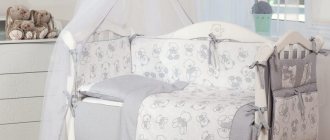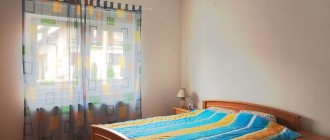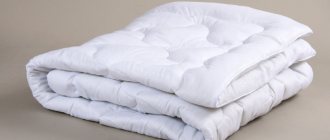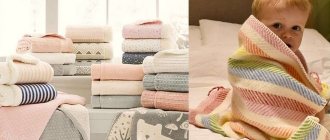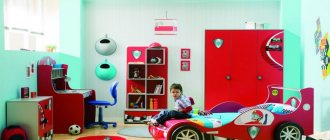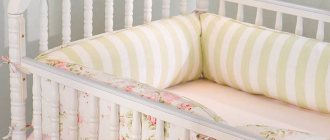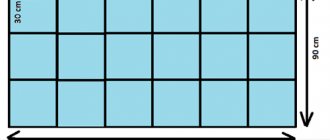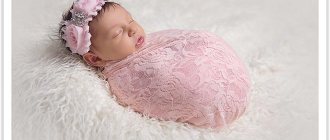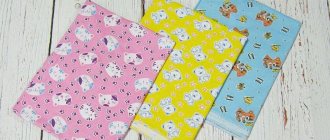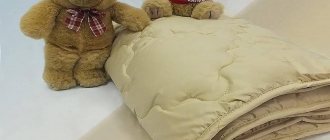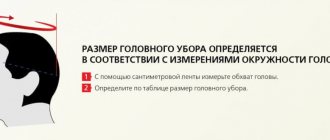Peculiarities
The boundary between a rug and a blanket is very arbitrary and is determined not so much by their structure as by the features of their use.
The blanket is intended only to warm the child while sleeping. A blanket is a single-layer, fairly light, but warm cape, which is usually beautifully designed and has decorative elements (fringe, ruffles, prints). This cape is designed for use in a variety of situations:
- the blanket can be used as a blanket when walking with your baby in a stroller;
- it can be rolled up and placed under the baby as a pillow or to give him the desired position;
- you can wrap your child in it when taking him out of the stroller;
- they can insulate the baby’s legs;
- a young mother can cover herself with a blanket from prying eyes to feed her baby;
- a child can cover himself with a blanket in the summer if it is too hot for him under the blanket, and he is uncomfortable sleeping uncovered;
- You can take the blanket with you to visit relatives and other places (if your child has to spend the night away from home, he will be much more comfortable sleeping under a familiar blanket).
How to choose the size of a baby blanket
Standard sizes are as follows:
- 80 x 90 cm;
- 95 x 100 cm;
- 105 x 115 cm;
- 110 x 140 cm.
It’s easy to choose a blanket for a newborn on the advice of experienced mothers. Some parents believe that the child will quickly outgrow the smallest model, and it is better to choose a size with a margin. But experience proves that this option is also inconvenient. It is difficult to wrap a newborn tightly in a large model; the baby opens up. In addition, an overly bulky item can hardly fit in a stroller.
The best option is the following. Buy 2 products of different sizes at once, depending on the season. If the child was born in the summer, buy a light small blanket, and a second warm, larger one. After all, by winter the baby will already grow up. And vice versa. Returned from the maternity hospital with a newborn in winter? The warm version will need a smaller size, and the light summer version will need a larger size. Following this principle, it is not difficult to decide on autumn-spring.
Kinds
The variety of blankets on the market can be divided according to two main parameters. The key to the properties of this accessory is its material.
- Cotton and linen blankets are lightweight and comfortable, but due to their breathability, they are mainly suitable for summer and require more complex care than synthetic ones.
- Products made from terry and velor are the softest and most pleasant of natural products; they absorb moisture well, but are more suitable for warm weather.
- Woolen accessories keep you warm (and if camel hair is used, they also provide health benefits), but they are highly electrified. Some children are allergic to wool, and caring for such products is more difficult than for cotton.
- Fur products are the warmest and most difficult to care for; they are electrified, can cause allergies and are recommended for use only outdoors.
- Faux wool and fur have the benefits of natural ones, but are usually hypoallergenic.
- Microfiber products are light and comfortable, suitable for children of any age, easy to care for, do not cause allergies and do not attract dust. However, they are much thinner than products made from other materials, which means they are only suitable for summer walks.
- A fleece blanket is a warm, hypoallergenic and very light option. Such products can be used both in the city and outdoors. The main disadvantage is that they can become electrified.
- Velsoft products combine the advantages of fleece and increased softness.
- Acrylic accessories are similar in properties to wool, but do not cause allergies, do not collect dust, and are cheaper than many competitors. Their main drawback is the rapid loss of shape.
- There are also products made from mixtures of synthetic and natural materials in different proportions.
The second important parameter of the accessory is its size. Main sizes of blankets:
- very small ones (75 by 75 cm and 75 by 90 cm) are suitable for newborns;
- medium (100 by 120 cm and 110 by 140 cm) are suitable for children under 3 years old;
- Larger blankets (150 by 200 cm) are suitable for older children.
Baby blanket sizes
The main rule for choosing a blanket by size is that the product must be larger than the size of the child’s bed.
Considering that beds for newborns are usually produced according to the standard - 60 cm by 120 cm, the product should be selected.
The standard sizes of baby blankets for newborns are, as a rule, 118 cm by 118 cm. However, in order for the baby to sleep peacefully at night and not open up, it is better to purchase a product a little larger, for example, 110 cm by 140 cm.
Read also: How to make a blanket from scraps
Don't worry that the baby product is too big. It can easily be used for a long time until the child grows up.
Why do you need to buy a blanket?
Regardless of the time of year when a baby is born, his body is very vulnerable in the first days and weeks.
Newborns easily catch any infection. Therefore, it is necessary to limit the baby’s possible contact with pathogens, and at the same time protect him from adverse weather conditions.
Even if discharge from the maternity hospital occurs in the summer, it is better to wrap the child in a blanket or blanket.
Well, in the cold season, during discharge, you cannot do without a warm quilted or woolen blanket, envelope or overalls.
Many young parents buy envelopes for discharge, richly decorated with embroidery, lace, frills and ribbons. Of course, there is nothing reprehensible in this, since such envelopes look very impressive. But at the same time, mothers and fathers who prefer such an impractical thing forget that such an envelope for discharge from the maternity hospital is a disposable thing.
It is doubtful that it, like my mother’s fluffy, floor-length wedding dress, could have been used even one more time later. Discharge overalls are also not a very practical option. Kids grow out of them quickly, so you can hardly wear them more than a few times.
But an elegant blanket for discharge is a completely different matter. It is comfortable and practical and, if not decorated with multi-layered frills of ribbons or lace, then it can be used as a regular blanket as long as the child can cover himself with it.
You can put it in a crib, in a stroller, or wrap your baby in it before going for a walk or visiting a doctor. An older child is placed on a blanket spread in the playpen or on the floor. In addition, perhaps it will later serve the younger brother or sister of your first-born.
If you are making your own discharge blanket, do not sew on trims such as frills, bows, or layered lace. It is better to make these decorative details removable: use the blanket with them for discharge, and later put them away and keep them as a keepsake, and use the blanket itself as usual. Of course, given that such a blanket will be a reusable item, you need to pay special attention to its convenience, not forgetting about the beauty of the product.
The main criteria when choosing should be quality, safety and hygiene.
And also the size, which also matters when buying a blanket.
The size of the blanket should be such that the baby can be completely wrapped in it.
At the same time, there should still be some space left for freedom of his movements. But it is hardly wise to take an overly large blanket, hoping that it can then be used almost until school age.
As for the materials from which it is made, preference should be given to natural fabrics that do not cause skin irritation and do not lead to allergies.
When is the purchase planned?
When choosing a blanket, the time of year matters a lot. If the baby is to be born in winter, then the blanket should be larger so that the baby can be completely wrapped in it, and at the same time there should be no air flow anywhere.
If the birth of a child occurs during the warm season, then, of course, a quilted blanket will not be needed for discharge, and its size may be more modest, since there is no need to wrap the baby in it like a cocoon. It may not even be a blanket, but rather a fleece or even a soft cotton blanket knitted.
In spring and autumn, the weather can change dramatically even within one day, or even several hours. Therefore, when choosing a blanket for discharge, you need to take this into account.
We recommend reading: How to choose a baby bath for a newborn: bathing in a folding one with a stand
In spring or autumn, give preference to blanket models with a removable backing, and it is better if it is a transformable blanket fastened with a zipper: it will protect your newborn baby from both the cold wind and the rain falling from a cloudy autumn or spring sky.
The size of the blanket for the off-season is desirable: it should be larger than the summer version, but smaller than the winter one.
Speaking about the time of purchase, I would also like to talk about when, in fact, to buy a blanket for discharge: before or after childbirth? Of course, in the latter case, the responsibilities for choosing this important item fall to the dad or other adult family members, with the exception of the mother of the newborn, who at this time is lying with the baby in the maternity hospital.
In general, there is no fundamental difference in when the blanket was purchased: on the same day when the pregnancy test showed the coveted two lines or an hour before discharge from the hospital. But these, of course, are two extremes that should be avoided, since in both cases errors in selection are possible.
In the first one, it is easy to make a mistake about the gender of the child and take a blanket of the wrong color. This is a small thing, of course, but it can ruin the mood during discharge, and it won’t be very pleasant for the baby’s parents to explain to everyone they know why the boy was discharged from the maternity hospital in a pink blanket, and the girl in a blue one. This problem, of course, can be solved by simply taking a blanket of a neutral color, but it is still advisable not to buy such expensive and large things until the gender of the baby is known for sure.
But, as already mentioned, another extreme is also possible: when, for fear of making a mistake with the gender of the unborn child and, accordingly, with the color of the discharge kit, relatives delay the purchase of a blanket until the birth of the baby, and then in a hurry they buy something completely different from what they should have would. And then the color seems to be right, but such important characteristics as the quality of the thing, the materials from which it is made, and its size leave much to be desired.
What recommendations can you give regarding choosing the size of a blanket for a newborn?
- It is not necessary and even unnecessary to buy a blanket for discharge immediately as soon as pregnancy is confirmed. But even then, the expectant mother needs to start looking closely at the commercially available models and, most importantly, study information regarding their safety and quality. Take a closer look at blankets from different manufacturers, read reviews about their products, and only then decide what you will buy.
- When choosing a blanket for a newborn, give preference not only to beautiful, but also to safe models. And don’t forget about practicality: a blanket should not become a “one-time thing.”
- The size of the blanket should be suitable for the crib or stroller, it should not be too small or too large. Well, as mentioned above, it is unacceptable to buy a blanket for growth, with the expectation that it will still serve you and your child until school.
- Currently, there are models of blankets with buttons or Velcro. They are convenient because their size is easily adjustable.
- A winter blanket should always be larger in size than a summer blanket. And even more than the one designed for the off-season.
- When choosing the size of the blanket, decide what you will need it for after discharge. Will you wrap your baby in it, or maybe just put crumbs in a stroller or crib? By the way, if you need a blanket for a small crib or stroller, then it is better to choose small-sized models.
Sizes of children's blankets
The main difference between bedspreads for babies and similar things for adults is the design and size. Otherwise, their functions are the same: they are used to warm a child, decorate a stroller or crib. Available in rectangular shapes, with straight or rounded corners.
The very first accessory that parents select with special trepidation is for discharge from the maternity hospital. This product is often replaced with an envelope. It is made from soft materials in pastel shades and decorated with a lace border around the edges.
As for the sizes of blankets for newborns, they can be different. Main parameters: 70×100, 75×75, 75×90, 80×90, 80×110, 90×120 cm. You need to choose depending on the weight and height of the baby, as well as on how it will also be used - in a crib , stroller.
Advice! Square products are worth purchasing for strollers. They take up little space and fit better. Plus, they are more convenient for wrapping the baby to take him home after a walk.
In the stroller
Many parents prefer to purchase a blanket for growth. And they are faced with the fact that the thing turns out to be too bulky and uncomfortable: it hardly fits in the stroller and gets in the way of the child. Therefore, the product must be small.
You can determine the correct size of the blanket using the table:
| Age | Home textiles (cm) |
| 3-12 months | 70×90, 90×90, 80×100, 90×110 |
| from 12 months up to 3 years | 100×120, 105×115, 110×140 |
| Over 3 years old | 110×130, 110×140 |
Advice! When choosing a product for a stroller, you must take into account seasonality. The best option is to purchase a demi-season and insulated one.
How to choose?
Due to its versatility, a good blanket must meet certain parameters:
- ease;
- hypoallergenic and absence of harmful substances in the composition;
- ensuring sufficient ventilation and heat retention;
- comfort;
- ease of washing and care;
- design;
- price.
Keep in mind that single-color blankets in calm tones are more suitable for newborns and very young children. Bright and colorful products can irritate the baby. Older children like blankets with bright prints and images of their favorite cartoon characters.
In an area with variable weather, the best solution may be to buy two blankets (summer and winter) that can be worn together and used depending on the temperature.
The presence of silk in the product does not improve its properties, but does affect the price, and mixtures of synthetics and natural materials can cause allergies. Mothers and grandmothers who know how to knit can make a blanket from cotton or wool for a child themselves, the main thing is that the resulting product meets the parameters listed above.
Due to its versatility, a good blanket must meet certain parameters:
- ease;
- hypoallergenic and absence of harmful substances in the composition;
- ensuring sufficient ventilation and heat retention;
- comfort;
- ease of washing and care;
- design;
In an area with variable weather, the best solution may be to buy two blankets (summer and winter) that can be worn together and used depending on the temperature.
The presence of silk in the product does not improve its properties, but does affect the price, and mixtures of synthetics and natural materials can cause allergies. Mothers and grandmothers who know how to knit can make a blanket from cotton or wool for a child themselves, the main thing is that the resulting product meets the parameters listed above.
In conclusion, do not take a blanket in the stroller with a reserve “for growth”. If possible, buy two options in different sizes depending on the month the baby is born. When choosing the size of a baby blanket for a stroller for a newborn, be guided by his height and weight at birth and the dimensions of the cradle. Soft, high-density microfleece blankets fit perfectly into the stroller and meet all safety requirements; they are warm, lightweight, easy to care for and very aesthetically pleasing.
Why is the size of a baby blanket important?
Knowing that sleep for a child is a source of energy and the basis for full development, and that the baby will have to spend most of the day in bed, responsible parents are tasked with organizing a sleeping place in advance - carefully choosing a crib, stroller, mattresses, other bedding, developing the right lighting, provide reliable sound insulation.
In the hustle and bustle, it is often overlooked that the cause of discomfort and frequent waking up can be an item of daily use such as a blanket, namely an incorrectly selected size. What problems does such an omission entail:
- due to the discrepancy in size, length and width proportions, the blanket does not fit in the crib, bulges, and covers unevenly;
- impossible to refill;
- the child gets lost in it;
- the blanket is bulky, restricts movement, puts a lot of pressure on top (size restrictions are especially important for a cotton blanket);
- puffs up, forms thick folds that tightly cover the head, preventing normal breathing;
- the product is too small, does not allow you to fully wrap yourself up, move, change body positions - it blows from the sides;
- constantly gets confused, slides to the floor under the weight of its own weight and the child freezes;
- Due to non-standard sizes, difficulties arise in the future with the selection of duvet covers; as a result, the blanket begins to roll or dangle, which affects the comfort of sleep and does not satisfy aesthetic requirements.
Baby blanket size: how to choose the right one
That sleep is of great importance for the health and well-being of a child is a well-known fact, but often parents, trying to create all the conditions for a comfortable, full sleep, do not attach due importance to such a factor as the correctly selected size of a baby blanket. From this article you can find out why it is worth thinking about such things as how size affects quality sleep and what to look for when buying, what classification system for bed blankets exists, how models differ - standard sizes and unusual shapes of blankets, what parameters are considered universal.
What are the sizes of baby blankets?
When buying a baby blanket for sleeping, they often focus on the child’s age. The size chart, as a rule, corresponds to its age group: newborn, infant, early childhood, preschooler, primary school child, teenager. However, each child is individual, so take into account his characteristics.
| Age | Dimensions (cm) |
| Newborns, children under 1 year | 80x80, 90x90, 95x95 - for discharge 60x80, 80x100, 80x120, 85x115 - in a cradle, in a stroller |
| Up to 3 years | 90×120, 100×120 |
| From 3 to 5 years | 100x140, 110x140 |
| Schoolchildren, teenagers | 140x205, 150x200, 150x210 |
Table: Sizes of children's blankets by age
To prevent buyers from getting confused when choosing bed linen, most often manufacturers sew blankets in standard sizes.
For a newborn
The standard size of a blanket envelope for discharge from the maternity hospital is 80x80 cm. The square shape is very convenient for wrapping the baby.
If you plan to sleep your baby in a crib rather than in a cradle, then this blanket is ideal for covering your baby.
For a crib or cradle, the running size is 60x80 cm. This blanket fits perfectly into the narrow space of the cradle without clumping. And for use in a crib, it is suitable for babies who have not learned to roll over or sleep peacefully. In the second option, such a blanket can last up to a year, and then be used to cover the legs in a stroller or sled while walking outside.
For children under 3 years old
For children of this age group, a product 90x120 or 100x120 cm is suitable. This blanket is ideal for tucking into the sides of the child. In addition, it fits well in a crib, but it is worth considering that such dimensions are not suitable for a stroller or sled.
For children from 3 to 5 years old
A blanket measuring 100x140 or 110x140 cm can be used from three years old to primary school age (5-6 years), taking into account the individual characteristics of the child. You can also find models on sale: 100x150, 105x140, 110x160.
For schoolchildren and teenagers
The standard for these age categories: 140x205 or 150x200, 150x210 cm. Most often at this age, children sleep in single or adult single beds, and for them this size is ideal - the child has enough area of a single blanket for a comfortable sleep, so that it does not slid down.
When choosing a blanket for your child, pay attention not only to the filling, the degree of warmth and the quality of its tailoring, but also to the length and width of the product. After all, by choosing the correct size of the product in accordance with his age and individual characteristics, you will provide him with a warm and comfortable sleep.
Crib sizes
Before the arrival of a new family member, parents face many tasks that need to be resolved. Some problems need to be addressed before the baby is born. For example, purchasing a stroller or providing the baby with a sleeping place. Choosing the right crib for a child is not an easy question, because manufacturers of modern children's products offer a wide range of crib models for babies.
Stores sell compact cradles and large transformable beds that are suitable not only for a child in infancy, but also for a teenager at school. The bed is the place where the child spends a significant part of his life. It should provide conditions for comfortable sleep, because it plays an important role in the harmonious development of the child. In addition to choosing a crib, you need to decide on the size of the blanket for discharge.
Because later it will be used to cover the newborn. The standard size of a blanket for a newborn in a crib is 120x60 cm. This size of a baby blanket for a newborn in a crib is optimal. When the size of the blanket has been selected, you can begin choosing a crib.
Beds vary in type:
- For newborns up to 3 years.
- For preschoolers.
- For schoolchildren.
- For teenagers.
Standard crib size for newborns:
- From 0 to 3 years - 120x60 cm.
- From 3 to 7 years - 140x60 cm.
- From 7 years – 160×80 cm.
- From adolescence and older - 180x90 cm.
A DIY baby blanket should match the size of the crib. Usually the product matches the dimensions of the furniture. The dimensions given in the table correspond to domestic manufacturers. Imported cribs, for example, made in Italy, Germany or Greece, which are especially popular on the market, are increased by 15 cm. But the classification remains the same.
How to choose the right size
A blanket is an essential attribute of a comfortable sleep; it is used every day, starting from the first days of life.
Until recently, there were only 2 types of crib blanket sizes:
- for kids: 60x120 and 110x140 cm;
- for teenagers: 143x210.
Currently, there are many different models of different sizes on the textile market, which makes it difficult to choose, but allows you to choose a blanket that can provide the most comfortable conditions for a child’s rest and sleep. Taking into account the size of the purchased bedding is especially important for parents who do not plan to sew fabric covers themselves, which are worn to protect the blanket from dirt and premature wear, incl. due to frequent washing.
In such cases, you have to proceed from standards - standard sizes according to which domestic and foreign manufacturers sew bed linen. To ensure that the purchased blanket does not disappoint later, it is recommended to build on specific parameters.
The defining criteria are:
- age of the sleeper - the dimensions of a baby blanket are subject to standards developed specifically for newborns, one-year-old babies, preschoolers, and teenagers;
- Dimensions – height, weight, build. The age grouping is arbitrary; the individual characteristics of the child (large, thin, tall or short) should be taken into account. The selection rules are simple: the sleeping person fits completely under the blanket, is able to roll over freely, spread his arms and legs, and at the same time they do not “peek out” from under the blanket;
- size of the sleeping place - you should take into account what it is intended for, what functions the blanket will perform, the features of the bedding, the design of the bed, the method of dressing. This may be a non-standard product, such as a stroller envelope, or you plan to tuck a blanket under the mattress, use ties, buttons, Velcro - in these cases, precise measurements should be taken. If you purchase an ordinary classic blanket intended for a children's bed, cradle, transformable crib, or other furniture product, then according to generally accepted principles, it should create an airy atmosphere and be comparable to the dimensions of the bed - it is advisable to completely cover the sleeping area and have a small margin on three sides (except for the headboard).
Optimal sizes of baby blanket and pillow for newborns
Sound, complete sleep for a newborn is an indispensable guarantee of the health and correct formation of the baby’s posture. Therefore, it is so important to choose the right bedding for a crib.
The size of bedding should be suitable for the child's sleeping area.
When choosing, you should take into account that the baby spins and moves in his sleep, and the blanket can slide off. Therefore, to ensure that the child does not remain uncovered, it is better to choose a blanket no smaller than 80x120 cm. It can be tucked under the mattress, which will provide comfort and warmth.
The most common crib for children is 60x120 cm. For it, a blanket 110x140 cm (Russian standard) would be the best choice.
Selecting the material
In addition to the dimensions, it is worth considering the material of the product. This is a very important factor. It indirectly affects the selection of sizes, because certain fabrics tend to shrink after washing. Moreover, the manufacturing material has a direct impact on the child’s sleep, so it should not be overlooked.
Cotton
A cotton blanket is not the most comfortable and cozy type of blanket, as it weighs a lot, absorbs odors and moisture
Another warm option. This is a good alternative to down. Cotton filler has similar parameters, as it has excellent breathability, hygroscopicity and excellent heat retention. But, unlike the previous one, it does not tend to accumulate a lot of dust. As a result, it is not a breeding ground for unfavorable bacteria and dust mites. Thus, natural cotton filler is a hypoallergenic material that is perfect for warm bedding of any children's age category.
Woolen
A wool blanket is one of the best and highest quality of its kind, as it perfectly preserves heat and is very comfortable and soft.
Natural items made from wool have been valued for a long time. They perfectly accumulate and retain heat. Camel or sheep wool used as filler has its own energy. Wool blankets are usually made in the form of a blanket, but there are models with a wool lining. For the child, the second option will become more acceptable. Woolen products tend to become electrified and prickly to the touch, so it is better to limit their contact with open skin.
Silk
Silk blankets are the highest quality bedding. It comes from China. Now silk is becoming increasingly popular in Russia and the world due to its unusual properties and high quality. In addition to the fact that silk is a soft, light, pleasant material, it is able to maintain a uniform temperature in bed at any time of the year (although for some reason many people believe that silk blankets should be used only in the warm season).
Silk never creates a greenhouse effect. It is very wear-resistant and durable. It will be the best option for children who are allergic to down, feathers and other similar fillers. A special substance in the composition, siricin, helps to resist the development of ticks and other insects inside the product.
Silk is a high-quality material with many advantages. It is perfect for children of all ages.
Let's pay attention to synthetics
Typically, natural materials inspire confidence and are most often used for sewing various children's textiles. However, they also have negative sides: they can cause allergies, accumulate dust and static electricity. Therefore, it is worth paying attention to high-quality synthetic fillers.
Synthetic winterizer is the most famous and most common material, but it does not allow air to pass through well and quickly deteriorates from washing.
The most common are padding polyester and holofiber. They have good breathability and retain heat well. Such materials are hypoallergenic and have long become a complete replacement for natural fillers. There are many other options for synthetic bases for children's textiles.
A children's blanket made from high-quality holofiber will last longer and have better quality characteristics
Fleece
A fleece blanket is made from synthetic knitted polyester fabric, very warm and pleasant to the touch.
Fleece has a good fiber structure and is very soft. This is a great option for any age group. However, you need to use a fleece blanket carefully and not allow the child to sweat under it, due to the low hygroscopicity of the base. This material also does not allow air to pass through very well.
This option is suitable for cold winter walks, as it retains heat well, but does not “breathe”.
Bamboo
An unusual option is a bamboo blanket, good because it is anti-allergenic and antibacterial
This is a high-quality material that is hypoallergenic and even has antiseptic properties. It is preferable for children with weakened immune systems and a tendency to allergies.
A thing made of bamboo has an excellent “breathing effect”, does not accumulate foreign odors, and at the same time has its own unique aroma, which has a calming effect on the baby’s nervous system. This type does not require special care, does not shrink after washing and does not get confused during it.
Down
Duvets are one of the most pleasant and cozy among many other varieties.
You need to be careful with this species. It is not recommended for small children. Bird down, which is a filler, easily attracts dust. As a result, dust mites can grow there, causing various allergic reactions. For a stronger body, it does not pose a great danger, however, for newborns and younger schoolchildren, it is better to replace fluff with safer materials.
But this option also has positive sides. The down perfectly allows air to pass through and prevents the child from sweating too much. Its greatest advantage is its ability to retain heat perfectly. This option is perfect for cold winter walks.
Baykovoe
A delicate and soft flannelette blanket is harmless and environmentally friendly and is suitable for both a newborn and an older child.
Let's start with natural materials. They are hypoallergenic, so they are great for children.
Flannelette blankets are quite common. They are perfect for wrapping up your little one in the stroller during walks in the fall or on cold summer evenings. In this case, the product must be compact. It is worth noting that its thickness of 5mm makes it as convenient as possible for use outside the home.
This material is used when sewing bedding for different age groups. It is quite warm, but not suitable for winter. Excellent air permeability and moisture absorption. With such a blanket, your baby will always be dry while sleeping.
Assortment of blankets for discharge from the maternity hospital
Of course, purchasing a blanket for a child is not difficult; choosing one is much more difficult. After all, specialized stores offer a huge range of products made from both natural and synthetic materials.
Which product should you choose to keep your baby healthy and sleep soundly?
It is not surprising that the choice is so difficult, because they differ in color, decor and finishing, type of tailoring and even packaging method.
However, the main characteristic that influences the client’s final choice is the material from which it is made – the cover and filling.
Covers, like duvet covers for a baby blanket, can be made natural or synthetic.
Cotton, calico, cambric, satin, silk, and wool are used as natural materials. The advantages of such products are quite impressive.
- Soft and pleasant to the touch;
- Absorb moisture and evaporate it remarkably;
- Good air permeability;
- In the cold season, they provide the necessary “dry” heat;
- Wear-resistant, do not lose their quality after repeated washing.
Synthetic filler
Blankets made from synthetic materials such as acrylic, fleece, Vellux, unlike natural products, do not “breathe” as well.
However, such products are all hypoallergenic, which eliminates the possibility of any allergic reactions on the baby’s skin.
In addition, synthetic materials retain heat well.
Accidentally punctured your air mattress? Find out what you can use to seal an air mattress.
Your sofa has dents and is making it uncomfortable to sleep? Use a thin latex mattress. What it is and how to choose the right one, read here.
And if you just want to decorate your sofa, choose beautiful cushion cushions for the sofa. Read here what other decorative pillows there are for the sofa.
Natural fillers
Natural ones include: goose and eider down, wool, cotton, eucalyptus, buckwheat husk, silk and bamboo.
Read also: Handmade blankets and bedspreads
Children's blankets made of bamboo and eucalyptus have antibacterial and hypoallergenic properties, as they are made of environmentally friendly materials. Such products are indispensable for children with sensitive skin.
Silkworm silk is a very common material for making children's bedding. Thanks to its qualities: wear resistance, softness, tenderness, a product made from such material will become a favorite for every child.
In addition to the listed qualities, silkworm silk has the unique ability to maintain an ideal microclimate, which is so necessary for a baby’s beneficial and healthy sleep.
Wool filler
A children's wool blanket, well known to many generations, is very popular and in demand in the modern world.
Considering the thermoregulating properties of wool, products made from this material can easily be used at any time of the year.
As a rule, parasites and dangerous microorganisms do not appear in wool. In addition, a baby sheepskin blanket has remarkable therapeutic properties, activates blood circulation in the vessels and improves the child’s well-being.
Pooh
Down blankets are also not without attention. Light, almost weightless, products perfectly retain heat and keep you warm in the coldest frosts.
However, down products should be used with extreme caution. The product is very warm and the baby can open up during the night.
As a result, the child's body is exposed to sudden changes in temperature, and signs of a cold may appear. Pediatric doctors advise not to use down fillings in cribs for newborns unless necessary.
Cotton filler
As for a cotton blanket, doctors also do not recommend covering a baby with it, especially a newborn. The product is too heavy and almost does not allow air to pass through, as a result, oxygen does not reach the baby’s body.
Artificial fillers
As for artificial fillers, their popularity is increasing year by year. For example, holofiber, artificial swan down or nanometer, due to their high qualities, have firmly taken their place in the bedding market.
Siliconized fiber or holofiber is a new type of filler, modern and of high quality. In it, manufacturers have brought to life all human needs.
Holofiber is able to retain its shape for a long time, has the highest ability to pass air, retains heat, is hygroscopic and hypoallergenic.
With the help of a travel inflatable pillow, you can fall asleep even if you are driving on a bad road. The main thing is to choose a pillow made of high-quality durable rubber.
And at home it is better to sleep on pillows made of natural fillings. For example, here we describe how to choose a pillow with linen filling.
Do you want to know what other fillings are available and which pillows are better? All the secrets of choosing a good pillow are here.
Features of Transformers
Transformable blankets are very practical, but at the same time beautiful and comfortable. They are made from different materials for both sides; there are models with insulation. The inner side is mainly made of 100% cotton fabrics: sateen, calico, flannel fabric. There may also be cotton jersey, and there is also bamboo fabric. Natural fabrics are hygienic, comfortable for the baby’s body, soft and warm. In addition, they are easy to care for.
They are made according to the “two in one” principle: an envelope, so convenient for babies, and a blanket.
The external side can be:
- made of plush. Its pile can be wool, cotton or even silk, but the canvas is only made of cotton;
The plush blanket is soft and cuddly. - fleece. Its disadvantages: it is electrified, which means it attracts dust. But in contrast to this drawback, it is easy to care for: easy to wash and dries very quickly;
The polyester material is soft. - from velvet.
Velvet blankets look very solemn and elegant. This is a suitable option for discharge, and if you plan to use it in the future, you should take into account that the material is difficult to care for; - made of wool.
A woolen blanket is the warmest option for the harsh winter cold. It is beautiful and warm at the same time. It is suitable for the baby when he is discharged from the hospital in cold weather. Only wool has disadvantages - it can cause allergies and is demanding to care for; perhaps only dry cleaning is suitable for such a product.
A transformable blanket can be transformed from a simple blanket into an envelope using various fixation elements:
- Tapes . It's beautiful, the degree of fixation is easily adjustable. Ribbons can be changed at your discretion (for example, if you are not satisfied with the length, material of the accessory, color). Disadvantages: tying a ribbon around a baby will take more time; a young mother may require dexterity and skills that are acquired with experience.
- Lightning . It's very convenient and fast. Cons: You need to make sure that no fabric gets into the zipper teeth (so that the zipper doesn’t “stick”). If it fails, it can be difficult to replace. Also, zipper parts can scratch a child’s skin when the transformer serves as a blanket.
- Buttons and buttons . They are reliable and easy to change. Cons: Hard parts on the blanket can irritate your baby's skin.
Types of blankets
Let us consider in detail what types of these products there are.
According to the age:
- children's;
- teenage;
- for adults.
By manufacturing method:
- one-piece;
- from shreds;
- knitted;
- sewn from fabric.
By type of material
Made from natural fur
Fur blankets are the warmest, but they are difficult to care for. It's better to use them outdoors. It must be remembered that such products are highly electrified and can cause allergies.
Made from natural wool
Products made from sheep, goat, and camel wool keep a child warm and are good for children's health.
Pros:
- goat wool has bactericidal and anti-inflammatory properties;
- camel hair absorbs toxins;
- Sheep wool stimulates the body's metabolic processes.
Minus:
Wool causes an allergic reaction in some babies.
Linen and cotton bedspreads
Cotton and linen are natural plant materials. They make lightweight, practical products. But there is one significant drawback - they are heavily blown and cannot be used in cold weather.
Made from velor and mohair
These blankets are the most pleasant and soft. They absorb moisture perfectly and do not lose their shape.
Children's textiles made from artificial materials are generally hypoallergenic and do not attract dust.
Made from acrylic
Acrylic blankets resemble wool blankets in their properties, but are cheaper.
Advantages:
- does not accumulate static electricity;
- does not cause allergies.
Disadvantage: They quickly stretch, losing their original shape.
Made from fleece
This is a very light and at the same time warm option. It does not accumulate dust, so it can be easily used outdoors and in the city. The disadvantage is that some models are electrified.
Microfiber
This synthetic material is pleasant to the touch and does not cause allergic reactions. The fabric can absorb moisture and dries quickly. Microfiber products are very light and thin, so they are suitable for the warm season.
Made from faux fur and wool
These products have the same positive qualities as their counterparts made from natural materials. But unlike natural “fluffies”, artificial bristles do not cause allergies.
General recommendations when choosing
- The blanket should be elegant! Your loved ones will come to meet the newborn, and everyone will pay attention to the baby’s first clothes. Please note that everything in the photo and video will be saddened for life.
- The baby should be comfortable, so choose a blanket according to the season.
- It is better to give preference to high-quality natural materials, with a minimum of synthetics.
- Think about practicality: if the product is easy to care for, then in the future you can use such a children's blanket on the bed.
- In summer it can be difficult to predict the weather. Sometimes it’s worth buying two blankets for discharge: a warmer one and a lighter one. Photos of children's bedspreads for a boy's bed can be viewed at the link.
You don’t have to overpay for the brand; you can find a quality blanket at an affordable price. The expectant mother can knit it herself or “order” it for loved ones. Finding diagrams is not a problem and, for sure, someone will be happy to get to work!
What color of baby blanket to choose for a girl and a boy
When choosing a color, they are guided by the gender of the child. Pink and red are considered girly (for girls). To diversify the choice, modern manufacturers enrich the range of products with different shades of these colors and their combinations. All other colors are considered neutral, suitable for both genders. A variety of summer discharge kits for newborns can be viewed in this article.
For boys, choose blue and blue.
A product of a neutral color should be chosen when the sex of the child is still unknown or it is assumed that this blanket will then be passed on “by inheritance.”
Famous manufacturers
- TM Choupette (Russia) produces clothes and underwear for newborns, uses exclusive materials from world brands, and the design of the products is inspired by high fashion.
- The Ecoline factory (Russia) produces high-quality children's products, including blankets for discharge.
- Gloria Small (Russia) produces lightweight cotton knitted blankets decorated with prints and inscriptions.
- Luxberry (Portugal) produces woolen openwork blankets.
- Klippan (Sweden) also offers wool blankets.
- “Dusty Miller” (Italy/Russia) is famous for its finest openwork blankets.
Sources
- https://o-krohe.ru/kolyaski/detskie-pledy/
- https://momjournal.ru/semya/detskie-tovary/krovatka/razmer-odeyala-na-vypisku-dlya-novorozhdennogo.html
- https://textiletrend.ru/domashniy-tekstil/dlya-detskoy/odeyala-d/razmer-detskogo-odeyala.html
- https://poztelio.com/odeyalo/236-razmery-detskih-odeyal.html
- https://berkem.ru/tekstil/razmer-detskogo-odeyala/
- https://dekoriko.ru/odeyala/razmery-detskih-modeley/
- https://IzVolokna.com/domashnii/detskaya/postelnoe-bele/pokryvala-i-odeyala/pledy-na-vypisku-dlya-novorozhdennyx.html
[collapse]

